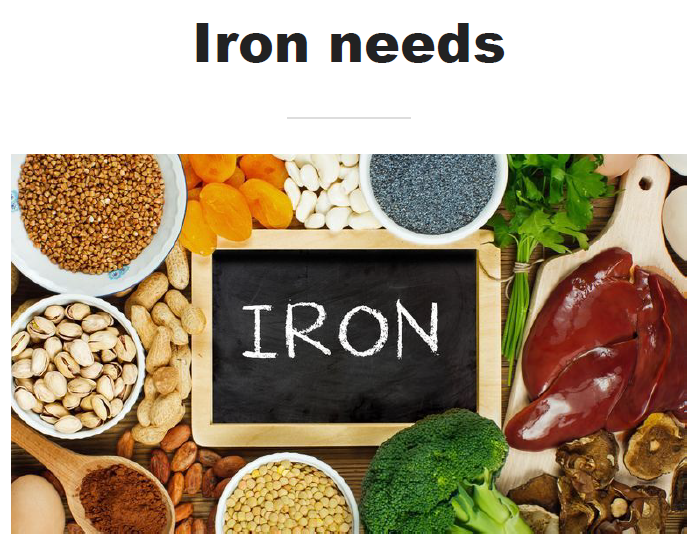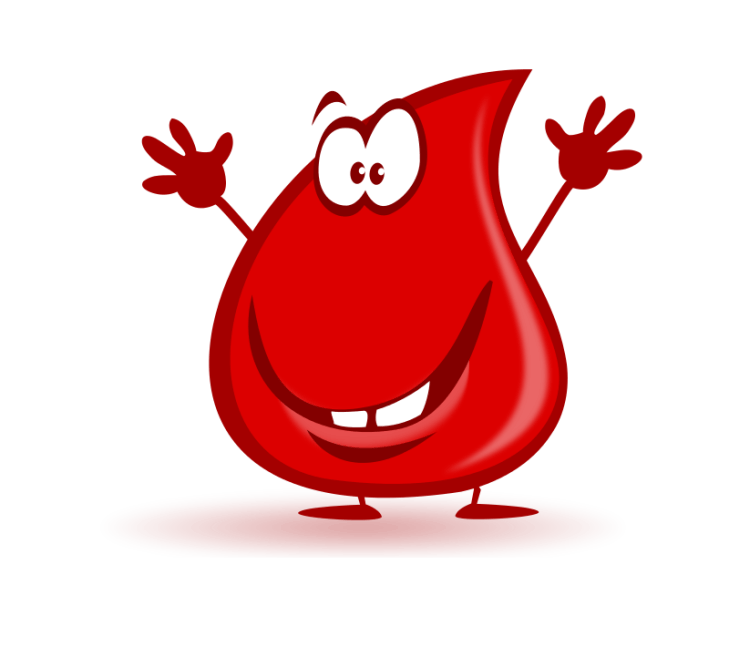
Iron, a vital element for the human body
Iron is essential to produce:
- Haemoglobin (red blood cell pigment that carries oxygen to the cells)
- Myoglobin (muscle protein capable of storing oxygen)
Iron is constantly recycled in the body. When a red blood cell is destroyed, iron is recovered and stored for the production of a new haemoglobin molecule that will be used to make a new red blood cell. On a daily basis, iron is lost in dead skin cells, in sweat as well as during menstruation of women. This amount of iron loss, whose importance depends on the individual, is the amount of iron that you must absorb through food. Indeed, the human body is not able to produce iron.

Iron in food
Most foods contain iron, but only a small fraction of the iron ingested is actually absorbed by the body.
Iron is present in the food in two forms: heme iron and non-heme iron.
Heme iron is the one that is best absorbed by the body: about 20-30% of iron is absorbed. It comes from haemoglobin and myoglobin from animal products, so it’s contained in foods like red meat, poultry and fish.
Non-heme iron is less absorbed by the body: less than 5% of the iron is absorbed. It is contained in eggs, legumes, vegetables, grains and wheat germs.
Iron recommended daily intake
For children, the iron intake must be important: the body tissues growth requires an increase in blood volume. This increase in blood volume is only possible thanks to iron. From birth to age 6, the iron requirement is 7mg/day. Iron requirements then increase at the same rate as growth, reaching 13 mg/day for teenage boys and 16 mg/day for teenage girls.
After the growth period, the recommended dietary intakes of iron are as follows:
Adult women who have menstrual periods: 16 mg/day to make up for menstrual losses
Adult men and postmenopausal women: 9 mg/day
Pregnant women: 30 mg/day. The development of the foetus and the formation of the placenta requires a significant increase in blood volume.
Nursing women: 10 mg/day to compensate for iron losses in milk.
People over 75 years of age: 10 mg/day to reduce the risk of anemia.
Athletes: +6 mg/day. An increase in blood volume is needed to provide enough oxygen to the muscles.
Iron deficiency occurs when the body loses more iron than it absorbs over a long period of time. In this case, the body tries to increase the absorption of iron by the diet. But if it is not enough, then the body must draw on its reserves of iron. In the absence of new supplies of iron or sufficient intakes, the reserves are empty and iron runs out. Various symptoms indicate this deficiency: fatigue, decreased physical performance, exhaustion, focusing problems, sleep disorders, headaches, mood disorders, hair loss, brittle nails, chapped lips, restless leg syndrome, increased nervousness, increased susceptibility to infections. If there is a suspicion of iron deficiency, you doctor can quickly confirm or rule out this suspicion with a simple blood test.

Promote good absorption of iron
The first advice is obviously to favor the consumption of iron-rich foods: offal (black pudding, liver, kidneys), red meats, shellfish (clams, periwinkles, mussels), fish (tuna, sardines, herring, mackerel), seaweed (sea lettuce, spirulina), legumes (lentils, chickpeas, kidney beans), enriched cereals, cocoa (dark chocolate), thyme and spices (curry, cumin, ginger, coriander).
But eating iron-rich food is not enough: some food combinations have a positive impact and some a negative. one Here are some examples …
- The consumption of fruits and vegetables during meals greatly increases the assimilation of iron contained in other foods: vitamin C helps iron to enter the body.
- The consumption of meat, poultry or fish (sources of heme iron) will
- promote the absorption of non-heme iron contained in other foods.
- The consumption of tea and coffee is preferable two hours away from meals: the tannins present in these drinks affect the optimal iron absorption.
To fill up with iron, try my recipe “Ground beef with red kidney beans” … a combination of legumes and meat to allow optimal absorption of iron they contain.